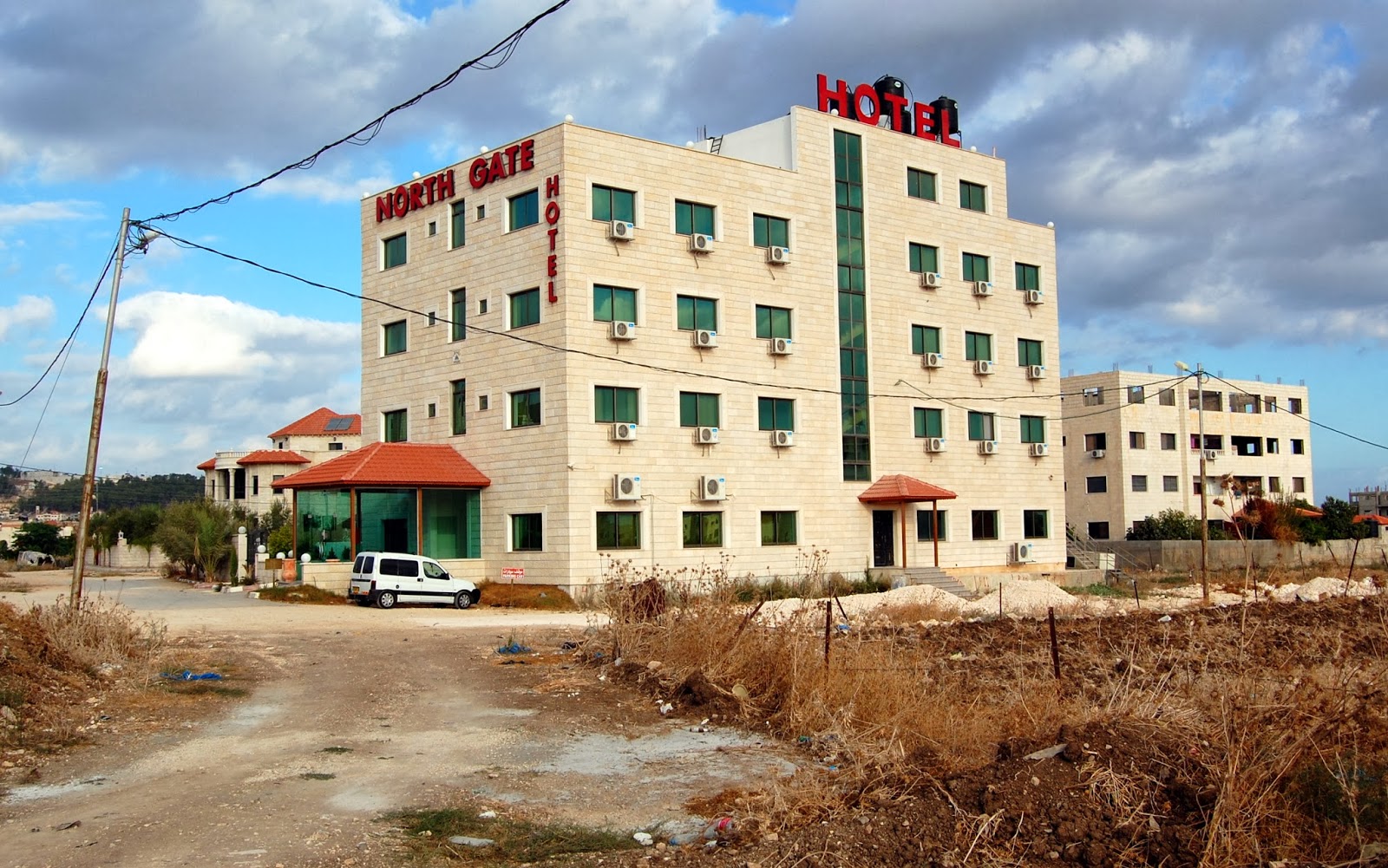As befits a pilgrimage, the Nativity Trail was originally walked all the way from Mary's House. 'The route from Nazareth to Mount Tabor and on to Faqu'a passes through suburbs and along roads and has little to recommend it other than the ascent of Mount Tabor'.*
At home in the English Cotswolds a group of internationals walking beside a main road would attract little more attention than a piercing blast from the air-horn of a juggernaut as it hurtles past. Not so here, and trying to approach notorious northern Israel roadblocks and checkpoints on foot especially into the West Bank may have scuppered our journey on day one.
 |
| "Keep smiling but remember that guy pointing his camera at us" IDF recruits at the Kotel, June 2011 |
Bypassing the boring bits did not sound like cheating, and so after a whistle stop tour of Nazareth
 |
| The El Babour spice market and ancient grinding mill |
we boarded the sherut, that would later drop us at the Giboa-Jalame checkpoint, for a leisurely stroll through the wooded hillsides of Mount Precipice (1296') and Mount Tabor (1930').
Located on the ancient Via Maris between Egypt and Damascus, Mount Tabor has been important since early times. Its unique shape ("nubile breast shape" was our guide's description) captured the imagination of ancient peoples such as the Canaanites who attributed divine qualities to the mountain.
 |
| View of Mount Tabor from Mount Precipice |
In biblical times the area was the scene of many fierce battles not least the Battle of Megiddo (hence Armageddon) in the 15th century BC. Since then everyone from Alexander the Great to Napoleon and General Allenby in WWI seems to have fought here. Today only paragliders battle the thermals.
Mount Tabor's holiness stems from the Christian tradition that the Transfiguration of Jesus took place here. Since the 4th century Mount Tabor has been one of the holiest Christian sites. A Crusader fortress fell to Sultan Baybars in 1263. In 1631 the Franciscans returned, and over the following centuries churches and monasteries were rebuilt. Arriving at the top the most prominent structure is the Franciscan basilica, designed by another Italian architect (and monk) Antonio Barluzzi and completed in 1924. It is approached through the gate of the Crusader fortress.
 |
| The Basilica of the Transfiguration |
Although typically a little hazy to the west we could see Haifa on the Mediterranean, to the north the Golan Heights and Mt Hermon (9300') the highest point in Syria, to the east the Jordan Valley and the Sea of Galilee and to the south, the direction we would soon be walking, the plain of Jezreel and the Gilboa Hills. |
| The Jezreel Plain and Gilboa Hills from Mount Precipice |
It was mid afternoon when we walked across the border with our luggage, turned our watches back one hour and took a service-taxi into Jenin for a not so late lunch.
(Iain, a town planner, took a few surreptitious photos. Is this a model for a future security border between England and Scotland?)
Once described by travel writers as the most beautiful town in the Middle East, clearly Jenin still bears the scars of a large scale military invasion some 11 years ago. Our enthusiastic local guide was upbeat, but perhaps premature, about the return of tourism - we were the only guests at the newly built but forlorn New Gate Hotel. I was glad that the inspirational Al-Huria Youth Theatre (Freedom Theatre) http://www.thefreedomtheatre.org/ who I had seen perform at their home in the Jenin Refugee Camp** in 2011, and where a generation of youngsters have transformed their trauma into artistic pursuit, seemed to be going from strength to strength.
 |
| New Gate Hotel, Jenin |
*Walks in Palestine and the Nativity Trail, Di Taylor & Tony Howard (2001)
**1.4 million Palestinian refugees and their patrilineal descendants live in 58 refugee camps in Syria, Jordan, Lebanon, Gaza and the West Bank. Their 'right of return' was recognised in UN Resolution 194 in 1948. In total 4.95 million (UNRWA statistics, 2012), with many of those recently being made homeless in Syria, they remain the largest displaced population in the world.
